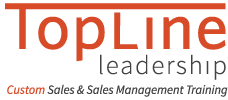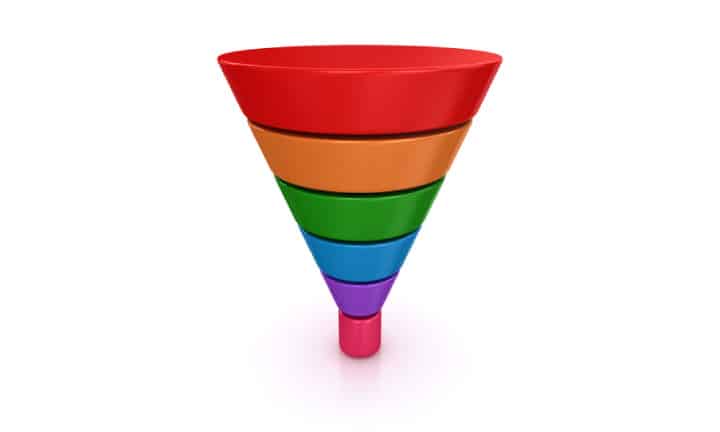The single most important issue in any sales organization is managing the funnel to achieve an accurate sales forecast. Let’s look at two ways this core issue is typically handled.
Company A’s funnel process uses one of the most common approaches to forecasting, orienting its sales funnel to the steps of its sales process: qualifying, opportunity identified, quotation provided, demonstration delivered, and negotiation/close. You know the drill.
Company B uses a funnel based on the customer’s buying process. Each stage of the funnel identifies specific actions that customers take when they are moving forward in their buying process: agree to a meeting, acknowledge their pain points, meet with 2nd decision-maker, define buying criteria, request a proposal, and so on.
Can you guess which sales funnel design leads to better forecasting accuracy? Right. Company B. By a big margin. If your company has a sales funnel more similar to Company A than B, here are three tips to get you started down a more accurate forecasting path.
1. Define the steps in your sales funnel and CRM based on customer actions.
In Company A’s funnel structure, sales opportunities are tracked based on sales tasks performed by the salesperson. In a selling-focused sales funnel, it’s easy to be deceived: a rep is confident that an opportunity will close successfully because they’ve done everything they’re supposed to do. But tracking sales rep actions doesn’t help you predict what a customer is going to do.
In contrast, Company B has specific criteria in its sales funnel that indicate whether a customer has completed one step of buying and is moving on to the next. The better a sales rep becomes at having customers complete next-step actions, the more consistent and more predictable the sales funnel becomes.
With a buying-focused sales funnel like Company B has, if and when a buyer chooses not to move forward, alarm bells go off. Sales managers are alerted to the problem right away, and can intervene while there is still a chance to fix the problem and get the opportunity back on track.
2. Transform Your Reps’ Perception of CRM from a Pain to a Gain
The work of defining a customer-focused sales funnel has a second benefit: Any rep who thinks negatively about the extra time and effort needed to input information into CRM will quickly see personal benefits from a Company B-type approach.
Look at it this way: Company A’s sales funnel generates sales process statistics that are lagging indicators (data collected after a process is complete) – such as how many calls, appointments, demos, and quotes have been made (or not made). By the time these data reveal a problem with a rep, it’s way too late for a sales manager to get involved in a specific opportunity and put in a fix. All managers can do is exhort the rep to, once again, “try harder.”
Company B originally had a CRM system like Company A, but realized that its use by the sales force was poor. Punishing people for not using the system didn’t work, and the lagging indicators weren’t helping anyone improve. They discovered that having a more customer-focused sales funnel was just the ticket for turning its CRM into something that both reps and managers would want to use. Salespeople can now be more precise in describing which opportunities are or are not moving forward, and they know where the trouble spots are. Also, sales managers have better visibility on customer actions in the earlier stages of the sales cycle, and can provide more timely advice to sales reps.
3. Re-focus your sales managers on coaching opportunities from beginning to end.
In Company A, forecasting is the process of tracking opportunities that are closest to closing. That means sales managers typically get involved when opportunities are at or near the Negotiate/Close step, often riding in to save the day if there is a sign of trouble.
Company B’s system places much greater emphasis on having sales managers coach reps through each customer milestone from initial contact to after-sale follow-up. Managers more quickly recognize the importance of coaching early-sales-cycle selling skills – so their salespeople are better at getting more and bigger opportunities into the funnel in the first place.
Proactively Managing Sales Funnels and Forecasts
As you may have picked up, the real difference between Company A and Company B is that the former does sales forecasting reactively—near the end of sales opportunities. Company B, however, is proactive. They view their funnel as a way to help them become truly customer focused: during each step in the buy-sell process, its reps are thinking about what the customer needs to do to move forward in buying.
A better process leads to better forecasting, not the other way around. With a buying-focused sales funnel and early (and often) coaching, sales managers and reps have a much better feel for which opportunities really are likely to deliver and which are at risk, and can have much more confidence in predicting which opportunities are going to close successfully.


